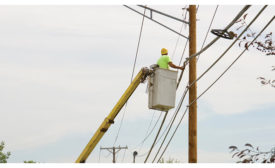Workplace Safety Culture
Lack of line workers raises safety risks
Crew members reinforce situational awareness
April 1, 2016
Telling "The Truth"
One of the ethical principles everyone knows is “Tell the Truth"
March 14, 2016
Never miss the latest news and trends driving the safety industry
eNewsletter | Website | eMagazine
JOIN TODAYCopyright ©2024. All Rights Reserved BNP Media.
Design, CMS, Hosting & Web Development :: ePublishing







